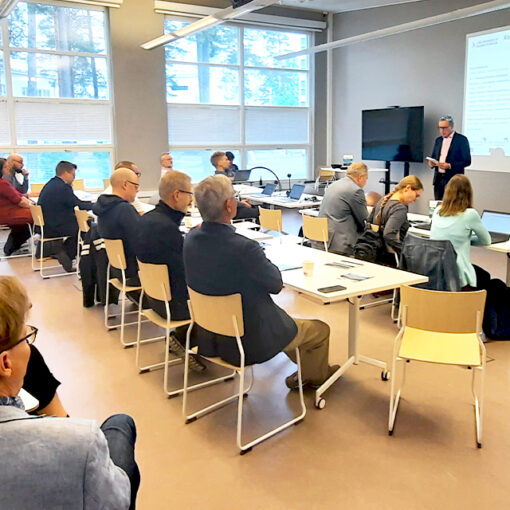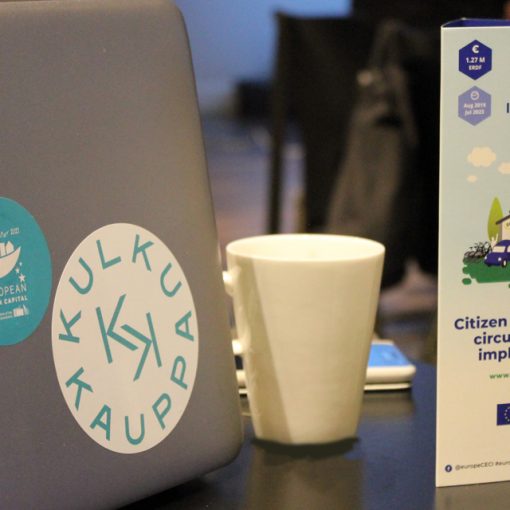Regions throughout the EU are updating their smart specialisation (S3) strategies for the post-2020 era. Focusing research and innovation resources to the most potential priority areas will remain at the heart of the S3 agenda but more emphasis is put also on the role of innovation-focused interregional collaboration and investments (European Commission 2018).
The main aim of the BSR S3 Ecosystem platform project – a project funded by the Interreg BSR programme – is to align S3 initiatives to better steer innovation investments across the macro-region. One of the outputs of the project is a study published by The Baltic Institute of Finland (The Baltic Institute of Finland 2020). Representatives from nine regions were interviewed for the study, and it gathers together good practices of S3 implementation from the regions. Päijät-Häme’s process of creating regional roadmaps for S3 implementation is presented in the study alongside with the creation of Päijät-Häme Bio-based Circular Economy Action Plan in the BIOREGIO project.

Varying approaches to S3 implementation
Even though each S3 process is unique, the study revealed three general approaches to S3 based on the analysis of the case regions: methodological approach, policy-driven approach and structure-driven approach. In the methodological approach specific methods are used to support the regions’ entrepreneurial discovery process, whereas in the policy-driven approach the focus is on specific policy aims and the S3 is used as a tool to reach these aims. The structure driven approach relies on known regional strengths and new ideas arising during the S3 process can be added to this already existing strong baseline. (Leino & Hunter 2020, 22.) These approaches are presented as separate approaches with identified benefits and challenges. However, these approaches are by no means mutually exclusive and in practice regions may adopt elements from more than one approach in S3 design and implementation.

Shared good practices create common opportunities for learning
Sharing good practices on S3 design and implementation has been one of the main objectives of S3 Interreg projects (Leino & Hunter 2020, 24). The good practices presented in the study have been recently presented to and discussed with the representatives of Päijät-Häme Regional Council. In Päijät-Häme the next step in the S3 process is developing an appropriate measuring and evaluation system. Being able to monitor and evaluate the effects of the policy can help to manage the regional development activities towards the desired outcomes and regional impact (Rinkinen et al. 2020). The study report shows that also other regions in the BSR macro-region are increasing their efforts in the monitoring and governance of S3. Also, the study identifies an existing good practice of regional innovation monitoring system from Pirkanmaa region, from which other regions can learn. All in all, the study can help regions identify mutual challenges as well as create new common opportunities for learning.
Author
Satu Rinkinen has worked as Project Manager of the BSR S3 Ecosystem project at LAB University of Applied Sciences during the year 2020.
References
European Commission. 2018. Cohesion Policy beyond 2020: Commission helps Europe’s regions become more innovative. Press release, 19/6/2018, Brussels. [Cited 4.12.2020] Available at: https://ec.europa.eu/commission/presscorner/detail/en/IP_18_4184
Leino, J. & Hunter, A. 2020. Smart Specialisation in the Baltic Sea Region – Learning towards Macro-regional Specialisation. Study carried out in the framework of the Interreg BSR S3 Ecosystem project, October 2020, Tampere. [Cited 27.11.2020] Available at: http://www.pa-innovation.eu/wp-content/uploads/2020/10/Smart-specialisation-in-the-BSR-2020_final.pdf
Rinkinen, S., Manskinen, K. & Rantala, T. 2020. Measurable steps forward from strategic circular economy roadmaps. Lahti Circular Economy Annual Review 2020. Unpublished.
The Baltic Institute of Finland. 2020. New studies on smart specialisation and interregional value chains in the Baltic Sea Region. The Baltic Institute of Finland website. [Cited 27.11.2020] Available at: http://www.baltic.org/new-studies-on-smart-specialisation-and-interregional-value-chains-in-the-baltic-sea-region/
Links
Link 1. Interreg Baltic Sea Region. 2020. BSR S3 Ecosystem. [Cited 27.11.2020] Available at: https://projects.interreg-baltic.eu/projects/bsr-s3-ecosystem-214.html
Link 2. Interreg Europe. 2020. BIOREGIO-project. [Cited 4.12.2020] Available at: https://www.interregeurope.eu/bioregio/
Pictures
Picture 1. BSR S3 Ecosystem project. 2020. Project logo.
Picture 2. Altman, G. Pixabay. [Cited 4.12.2020] Available at: https://pixabay.com/fi/photos/pelata-kivi-verkko-verkottunut-1237457/




